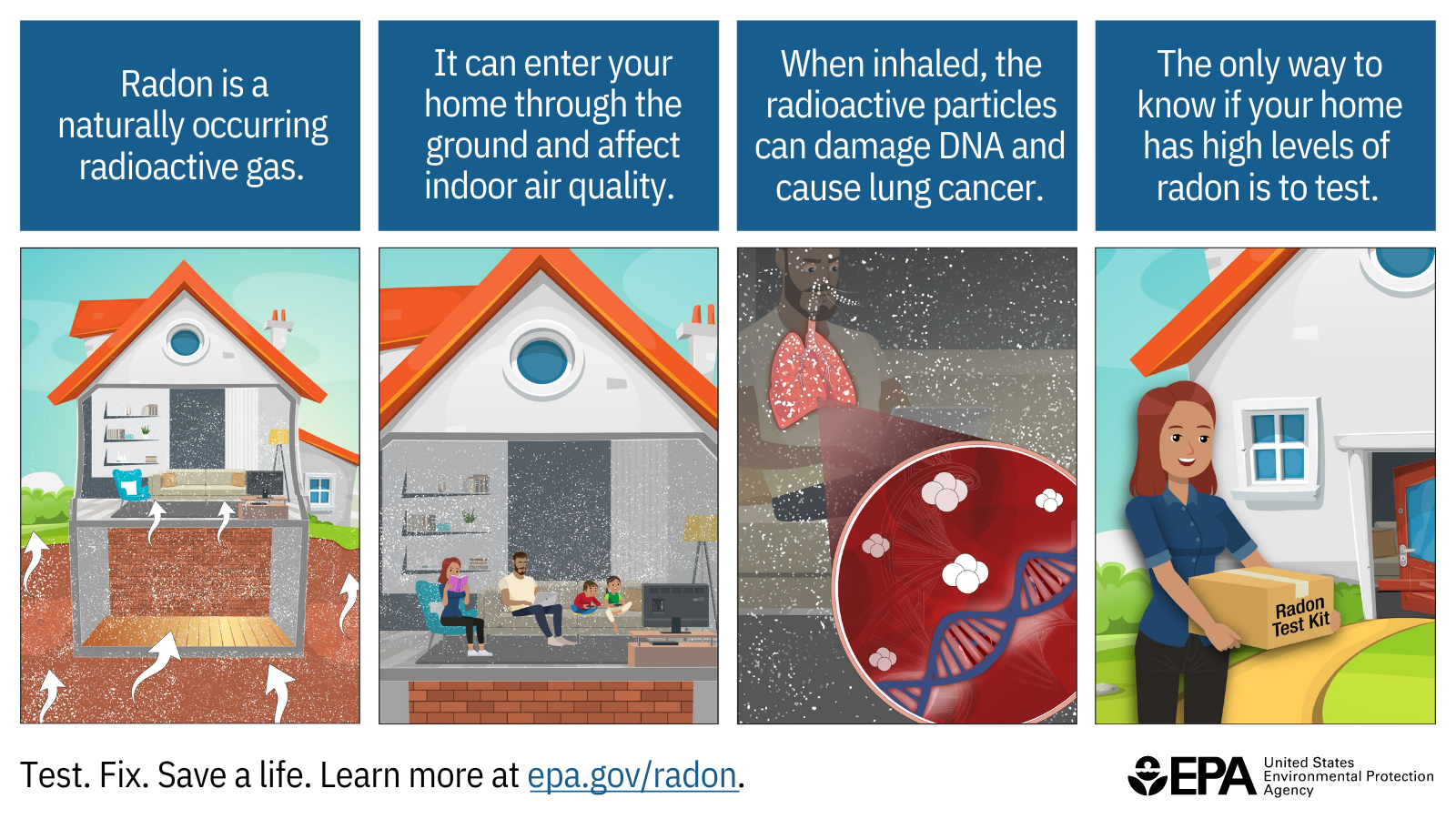information on
Radon Testing
Radon is a natural occurring radioactive gas.
Radon is a naturally occurring radioactive gas produced by the breakdown of uranium in rocks and soils. Radon gas is tasteless, colorless and odorless. The only way to know if it is in your home is to test for it.

Radon testing is crucial for assessing the presence of radon gas in indoor environments, as it can pose serious health risks when levels are elevated. Here's some key information about radon testing:
What is Radon?
Radon is a colorless, odorless, tasteless radioactive gas that forms naturally from the decay of radioactive elements like uranium, which are found in varying amounts in soil and rock throughout the world.
How does radon enter my home?
Radon is a radioactive gas that comes from the soil. Most homes and buildings are constructed atop the soil on a property. Air pressure inside your home is usually lower than pressure in the soil beneath and around your home's foundation. Because of this difference in air pressure, your house acts like a vacuum, drawing radon in through foundation cracks and other openings. Radon may also be present in well water and can be released into the air in your home when water is used for showering and other household uses. In most cases, radon entering the home through water is a small risk compared with radon entering your home from the soil.
What are the Health Risks?
Radon is the second leading cause of lung cancer after smoking. When radon gas is inhaled, it can damage lung tissue and increase the risk of lung cancer. Long-term exposure to elevated radon levels poses the greatest risk.
What are the Methods for Testing Radon?
There are different methods for testing radon levels in homes and buildings:
Short-Term Testing: This involves placing a radon testing device in the lowest lived-in level of the home for typically 2 to 7 days.
Long-Term Testing: This method involves leaving a radon testing device in place for more than 90 days, providing a more accurate representation of average radon levels over time.
Continuous Monitoring: Some devices continuously monitor radon levels and provide ongoing data.
What is the recommended Radon Levels by the EPA?
The U.S. Environmental Protection Agency (EPA) recommends taking action to mitigate radon levels if they exceed 4 picocuries per liter (pCi/L).

